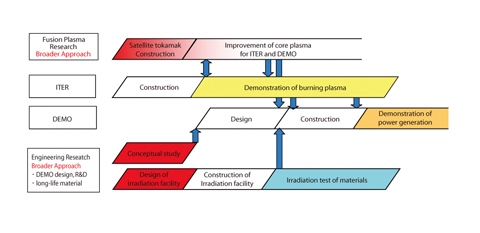Fig.3-1 There are three important areas in fusion research.
JAEA is the only research institute in the world investigating all of them
Fig.3-2 Broader Approach activities

Fig.3-3 Development step of fusion research aiming to practical use in the midst of 21 century
Fusion energy is one type of nuclear energy enabling permanent and sustainable development of society because the fuel is abundant, not unevenly distributed, it has fundamentally high safety, and it doesn't exhaust materials causing environmental damage, such as global warming and acid rain, in the process of power generation. In JAEA, the research and development of fusion energy have been conducted for 44 years including the period of the former JAERI. The ITER project, fusion plasma research, and fusion engineering research are keys to fusion development. JAEA is the only research institute in the world where these three areas are investigated comprehensively, as shown in Fig.3-1. In addition to the ITER project, the international cooperation between Japan and EU will be advanced over a broader area in order to realize the DEMO reactor (Broader Approach Activity).
"ITER", the next stage large tokamak, is being developed under international cooperation, originated from the U.S.-Soviet summit in November 1985. Its purpose is to realize and control extended burning plasma, and also to conduct experiments for the integration of fusion technologies.
It was decided to construct "ITER" at Cadarache in France and the critical role of Japan and the EU as well was agreed upon in the summit of June 2005 in Moscow. Formal participation of India was decided in December 2005 and the participants of ITER project grew to 7: Japan, EU, US, Russia, China, Korea and India, more than half of the world population. Kaname Ikeda, the former ambassador to Croatia, was elected as Director-General Nominee of ITER Organization, and the infrastructure of the organization is being developed. The joint implementation agreement of ITER was initialed in May 2006, and will be ratified after each party signs it in fiscal 2006, after which the ITER project enters the construction phase. Japan will make the second greatest contribution in procurement and staffing, following EU, the host party. JAEA is to be the domestic agency of ITER project in Japan, and will play a critical role to the ITER project.
The large tokamak device "JT-60" started its operation in 1985 as one of the three large tokamak devices in the world. "JT-60" has been the first in the world with many results, such as the achievement of world's highest ion temperature, 520 million degrees, the world's highest energy multiplication factor, 1.25, and the discovery of the thermal insulation layer and the current hole. Recently, research into the long pulse operation of "ITER" and reduction of the cost of power generation, by such measures as long sustainment of high pressure plasma, and simulation research to clarify the characteristics of plasma are being pursued.
Research and development of various advanced technologies which enable the utilization of fusion energy have been conducted. JAEA was hosted three of the seven ITER large R&D projects, and has established the technological basis for "ITER" construction. A breeder blanket and reduced activation ferritic steel etc. are now being developed by JAEA.
In the process of international negotiation regarding the determination of "ITER" site, Japan and EU agreed to implement the broader research and development (Broader Approach activities) that are necessary for "ITER" and DEMO with the two parties making equal contributions, in parallel with ITER implementation by the seven parties. The projects of Broader Approach activities are decided by MEXT, referring to the opinion of domestic specialists etc. as shown in Fig.3-2: (1) International Fusion Energy Research Center for computer simulation, remote experiment, DEMO design and R&D etc., (2) Engineering design and verification of the International Fusion Materials Irradiation Facility (IFMIF), (3) Satellite Tokamak. Technological meetings were held many times with EU to discuss the proposal from Japan, and the activities to be carried out and the allotment of work were agreed upon. Japan is now conferring with EU to ratify an agreement on EU-Japan fusion cooperation at the same time as the ITER agreement. JAEA is to be the Japanese implementing agency of the Broader Approach activities.
In the ITER project, about 20 years of experiment will be performed after the 10 years of construction phase. The control of burning plasma and the steady-state operation will be demonstrated, and the various fusion engineering technologies necessary for fusion reactors will be examined comprehensively in order to establish the technological basis for DEMO construction. On the other hand, in the fusion plasma research, the Broader Approach activities will be utilized as much as possible, and the research guiding the ITER project will be advanced, and the establishment of a steady-state operation with high-pressure plasma to realize compact fusion reactors is aimed. In the fusion engineering research, conceptual design of the DEMO reactor and the R&D necessary to utilize fusion energy will be advanced and the prospect to develop long-life materials will be obtained through the design of irradiation facility for materials. JAEA aims at the utilization of fusion energy in the middle of the 21st century, through a comprehensive approach to research including fusion plasma and fusion engineering technologies centering on the ITER project.